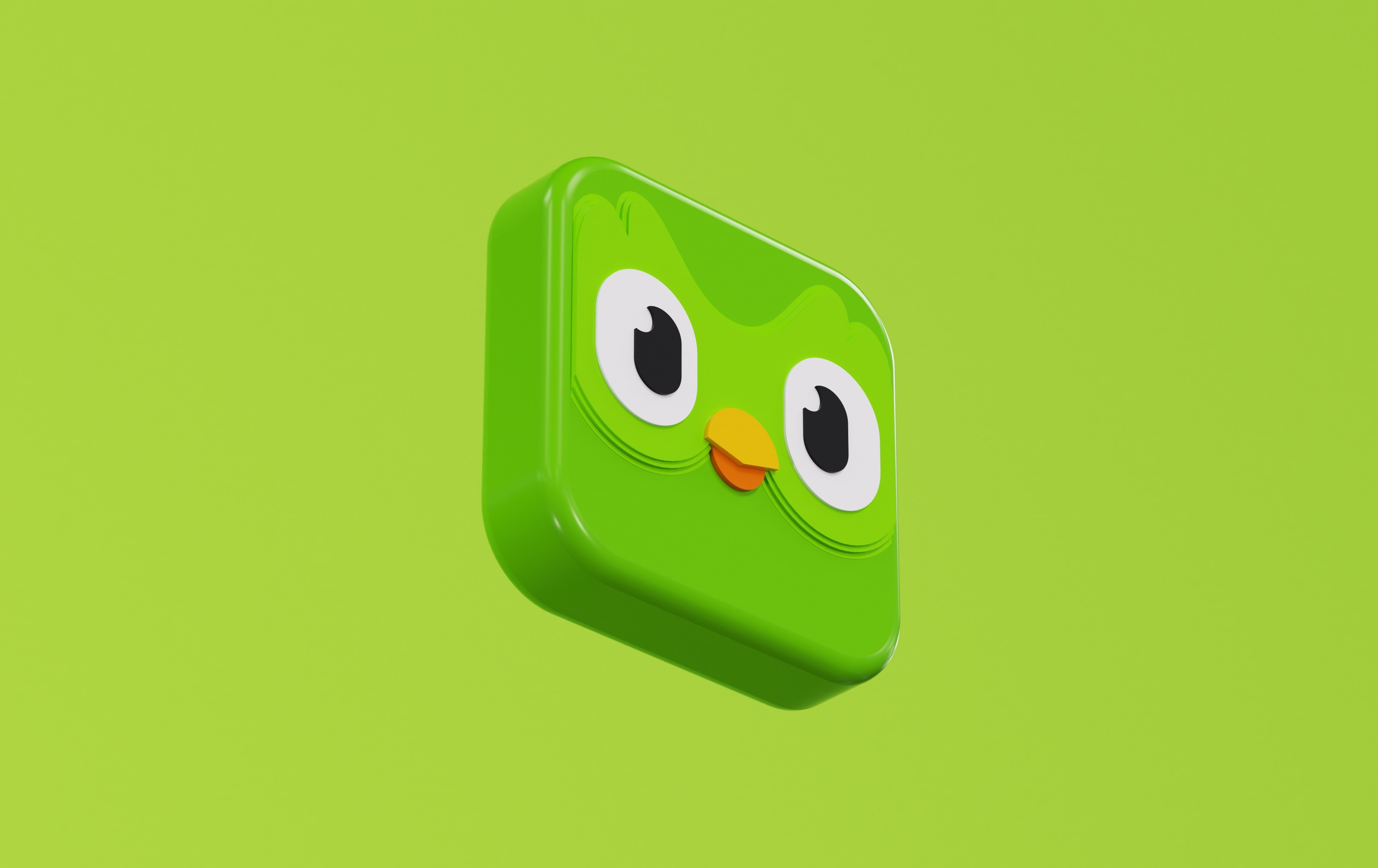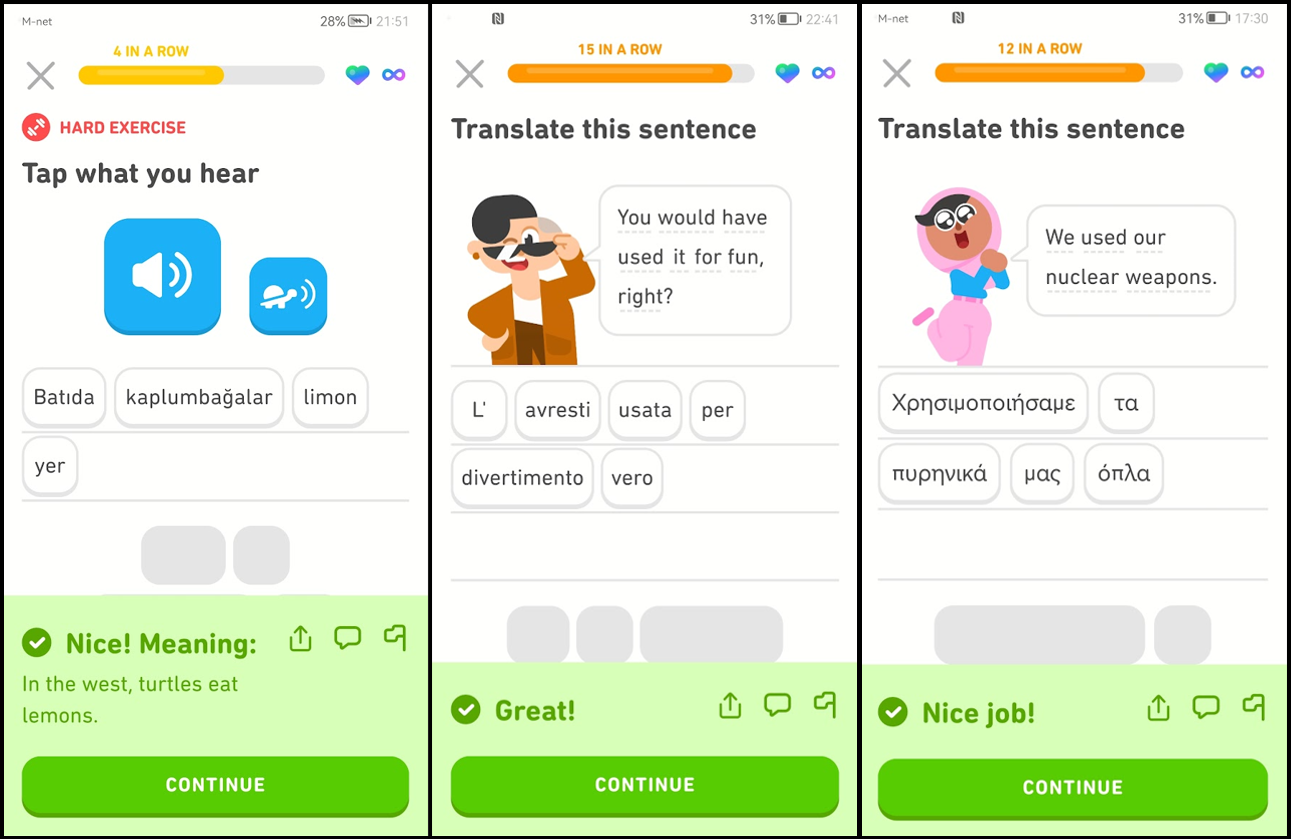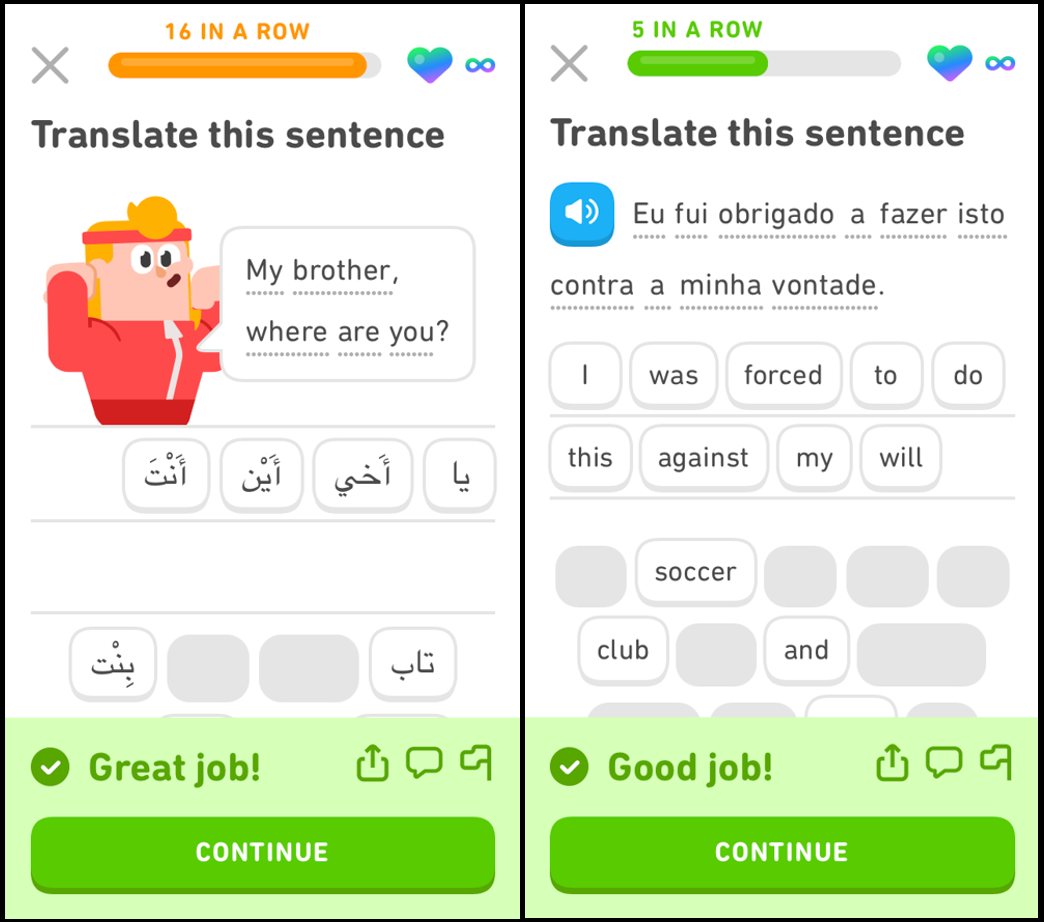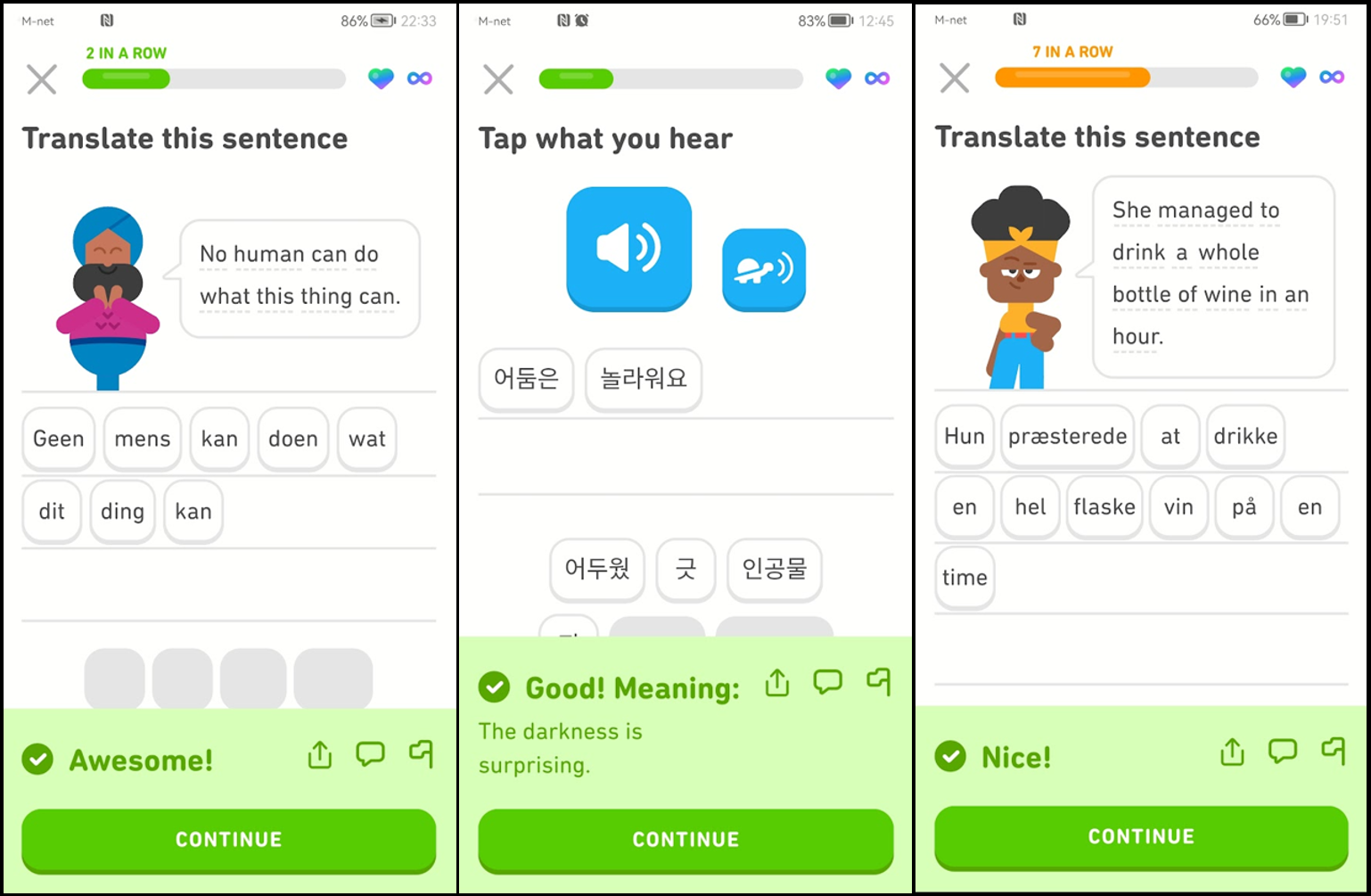
Give Duolingo a go!
By Richard Peters
Let me start by saying how wonderful I think Duolingo is: I love it! (Disclaimer: This post is in no way sponsored by or affiliated with the makers of Duolingo; I’m just a big fan!) As a free-to-use app (or for just a few euros if you prefer your experience to be ad-less), it puts language learning in easy reach of anyone with access to a smartphone – and that’s most of the people on this planet. Plus, as a language lover, how could I not adore an app that shares my passion?
One of the things I like about Duolingo is the way it uses nonsense to help you learn. As someone who talks a lot of nonsense himself, both at work and in my free time, I respond positively to the wild statements I’m presented with in whichever language I happen to be working on. I can see how learning about, say, the antics of a green elephant is more memorable than hearing about the wheels on a green car: the playful pachyderm is just so much more entertaining as a visual cue.

Naturally, Duolingo is gamified to make you persevere. For example, each time you finish a lesson, you’re rewarded with gems, which you can use to buy special features. The app praises you for practising every day. It features a leader board for weekly leagues that pit you against 29 random strangers from around the world. The longer you learn, the more special the app tries to make you feel.
One aspect of the app that I hadn’t really given much thought to until recently is how thoroughly it makes use of AI¹. Soon after Duolingo was founded in 2012, its developers saw the potential to improve their product by using this cutting-edge technology. Their first use case was a model that predicts when you’ll forget something in the language you’re learning because you haven’t seen it very often or very recently. This model helps select which exercises Duolingo serves up to users every day.

Ultimately, even if the app is trying to teach the same 20 words to all its users, every user’s experience will be different because they’ll see lessons that include those 20 words but are tweaked to their own proficiency: while learning the concept of “tree”, you might see “The tree is very tall” or “Yesterday I climbed the tree”, depending on whether the AI decides, based on how you’ve done in all your previous lessons, that you need to practise adjectives or verbs.
Other uses of AI include a machine learning model that predicts how hard any given sentence will be for you to understand. This prediction takes the form of a probability that you will correctly answer an exercise that uses the sentence. The clever part is that to keep you motivated, the model will react to how you’re doing during a lesson and give you exercises that are harder or easier; its ability to calibrate the difficulty of those exercises in the first place is another AI-driven feature that draws on the data from all the app’s users.
Yet another AI-powered aspect of how Duolingo actually teaches users, rather than just showing them phrases in a foreign language, is that it determines the nature of their mistakes so it can have them practise precisely those aspects in future lessons. Was the wrong answer down to a typo? Did the user conjugate the verb incorrectly? Or was the adjective in the wrong place? And does this fit into a pattern for that user? Do they often make the same kind of mistake? That is computationally much more complicated than simply comparing the user’s input to the correct answer and telling them whether they got it right.

I’m a regular user of Duolingo. I find its suggested daily learning time of 15–20 minutes is enough to immerse me in whichever language I choose in a way that the new vocab and grammar soaks in – rather like dunking a biscuit into an exotic blend of tea. Personally, I feel that devoting just five minutes of my time each day would leave my biscuit too dry, with the new words and phrases dripping off and soaking into the fell napkin of oblivion. That said, I still agree with the makers of Duolingo when they claim that even five minutes is better than none; a crumbly biscuit is, after all, better than a handful of dust.
I think it’s only fair to say that the app also has its drawbacks. After I first started using it maybe four years ago, I was soon routinely tapping away at my smartphone’s screen to type in sentences or select words to assemble phrases. But it wasn’t long before I found that all that tapping was earning me not just gems but also pain in my fingers, thumbs and shoulders. In the end, I abandoned my pursuit of perfect Portuguese to defend my digital dexterity. A couple of years ago I returned to Duolingo, this time in a mad dash to learn some Greek before making my first visit to the country. (In the end, I didn’t speak a WORD of Greek while I was there! But that’s by the by.) Since then, I’ve managed to use the app more or less daily – but I’ve made a point of looking after my hands a bit more, and so far, so good.
In a world where everyone is jittery about the potential impact of AI on all aspects of our lives, it’s good to remember just how many upsides there are to this technology – and greater understanding between people who speak different languages is by no means the least of them.
___________________________________________
¹ I am grateful to the following article for providing the details of how Duolingo uses AI: https://venturebeat.com/ai/how-duolingo-uses-ai-in-every-part-of-its-app/


